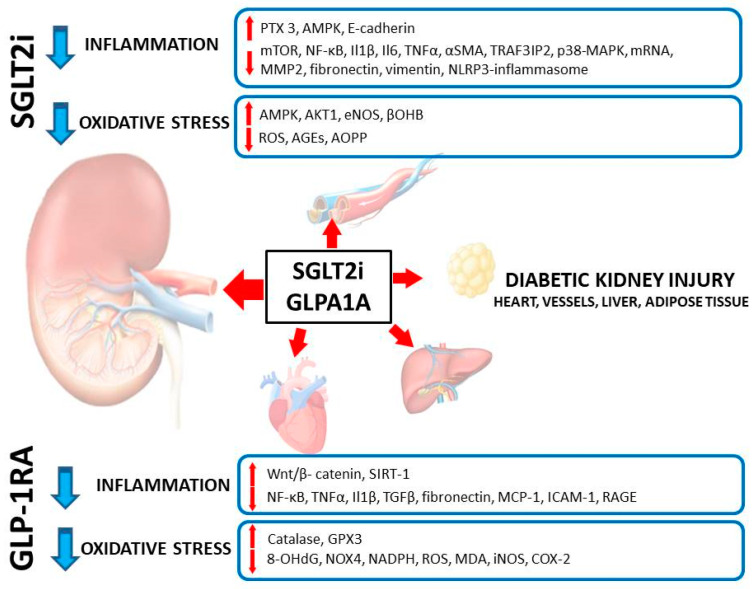Figure 2.
Selected mechanisms of interaction between SGLT2i, GLP1RA and inflammation/oxidative stress in the kidney and other target organs/tissues. Legend to Figure 2: 8-OHdG—8-Hydroxy-deoxyguanosine; AGEs—Advanced glycation end products; AKT1—AKT Serine/threonine kinase 1; AMPK—5′AMP-activated protein kinase; AOPP—Advanced oxidation protein products; COX-2—Cyclooxygenase-2; eNOS—Endothelial nitric oxide synthase; GPX3—Glutathione Peroxidase 3; ICAM-1—Intercellular adhesion molecule 1; Il1β—Interleukin1β; Il6—Interleukin 6; iNOS—Inducible nitric oxide synthase; MCP-1—Monocyte chemoattractant protein-1; MDA— malondialdehyde; MMP2—Matrix metalloproteinase-2; mRNA—messenger RNA; mTOR—Mammalian target of rapamycin; NADPH—Nicotinamide adenine dinucleotide phosphate; NF-κB—nuclear factor kappa-light-chain-enhancer of activated B cells; NLRP3-inflamassome—NOD-, LRR- and pyrin domain-containing protein 3 inflammasome; NOX4—NADPH Oxidase 4; p38-MAPK—p38 Mitogen-activated protein kinase; PTX 3—Pentraxin 3; RAGE—Receptor for advanced glycation end products; ROS—Reactive oxygen species; SIRT—Sirtuins; TGFβ—Transforming growth factor β; TNFα—tumor necrosis factor α; TRAF3IP2—Tumor necrosis factor receptor associated factor 3 interacting protein 2; αSMA- α-Smooth muscle actin; βOHB—β-Hydroxybutyric acid.

